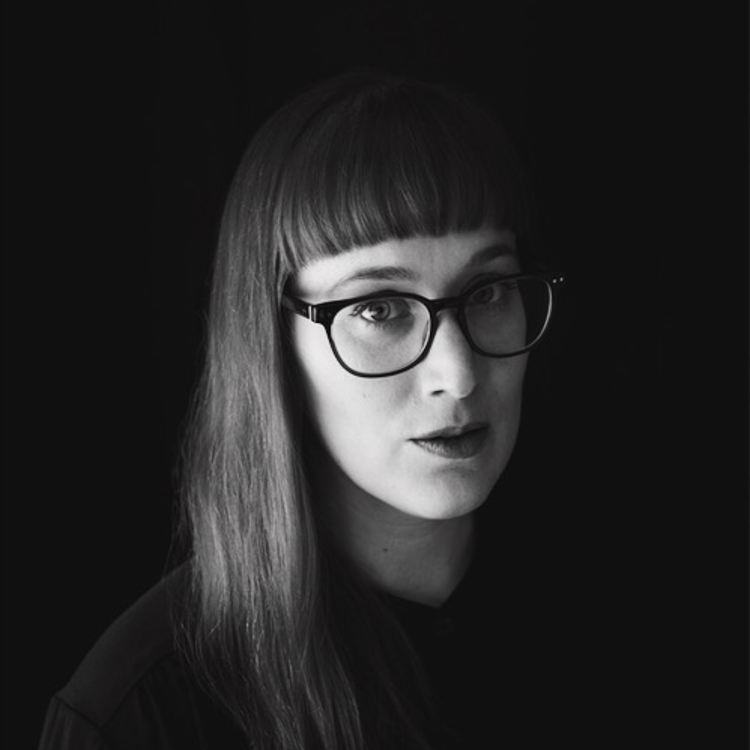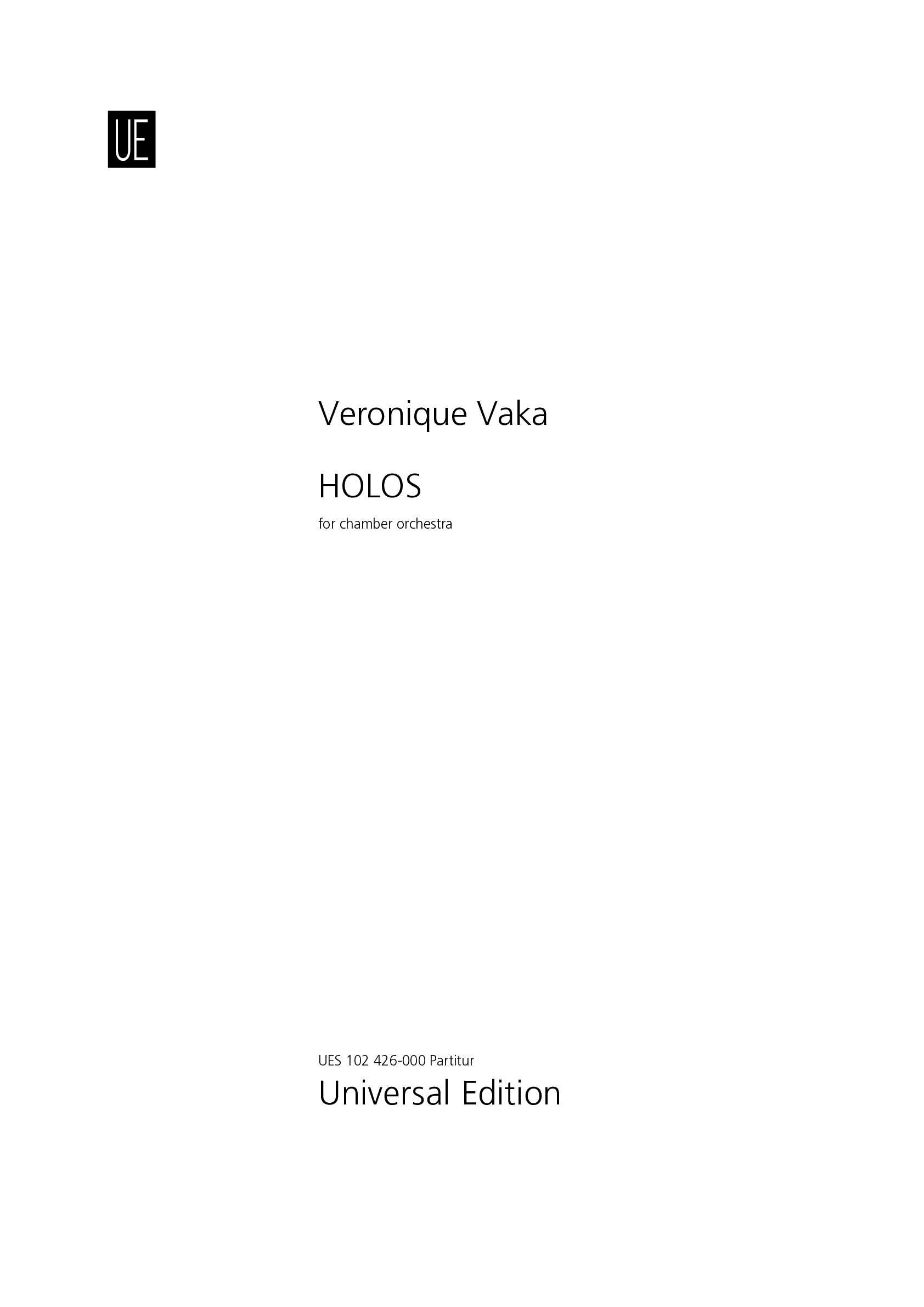

Veronique Vaka
HOLOS
Short instrumentation: 1 1 1 1 - 1 1 1 0, perc, hp, str
Duration: 11'
Instrumentation details:
alto flute (+fl)
cor anglais
bass clarinet in Bb
bassoon
horn in F
trumpet in C
bass trombone
percussion
harp
violin I
violin II
1st viola
2nd viola
1st violoncello
2nd violoncello
double bass
HOLOS
Printed/Digital
Translation, reprints and more

Veronique Vaka
HOLOSOrchestration: for chamber orchestra
Type: Dirigierpartitur
Sample pages
Work introduction
World Premiere: January 2023 • Caput Ensemble and Guðni Franzson
HOLOS
August 2022,
It has been seven days since the volcanic eruption began in Meradalir. I'm tired after heavy workload these past days. I manage the natural hazard monitoring at the Icelandic Meteorological Office and supervise the monitoring of the ongoing volcanic eruption. My email inbox is full of unread letters. I look at a letter from the composer Veronique Vaka and recall that I had promised her many months ago that I would write a text for her concert program. We don't know each other. We meet on the tenth day of the eruption. I'm on call and can relax a bit. It is refreshing to meet Veronique and I become invigorated when I show her the monitoring room where we are following the eruption. She shines. I sense that she understands as well as I do, that Iceland is no ordinary island. The weather changes quickly. The earth is constantly and often rapidly being sculptured by earthquakes and volcanic eruptions. Landslides and rockfalls, rivers and glaciers shape the land, sometimes in a disastrous way.
The largest and most active volcanoes in the country are covered by glaciers. Grímsvötn is the most remote and active volcano in the country. It is in the middle of Vatnajökull, the largest glacier in Europe and has erupted sixty times since the first settlers came. The glacier is up to a kilometer thick. Like other subglacial volcanoes, it melts part of the glacier, and the meltwater collects inside the glacier ice to form a subglacial lake. When the overlying ice sheet has risen by tens of meters, it reaches the limit of tolerance and the water breaks out in a catastrophic, glacial flood, where the murky glacial water melts its way through the ice and breaks out to inundate the black sands south of Vatnajökull.
It is interesting that we are both working with vibrations, sound waves, but at different frequencies. I tell Veronique about my recent research and that of my colleagues on Grímsvötn. We have found that the ice sheet above the subglacial lake in Grímsvötn vibrates continuously like a membrane. My research group has also discovered a very weak vibration signal that the large outlet glaciers in southern Vatnajökull, Síðujökull and Skeiðarjökull, cause each year in the fall. We are still investigating the source of these vibrations. A pilot sent me a picture of Síðujökull this summer. He had never seen it like this before. A field of brownish, soft, slush-ice instead of bluish rock-solid glacial ice.
The glaciers are retreating rapidly due to catastrophic warming in recent years. They leave behind unstable slopes which increase the risk of landslides. Furthermore, deep glacial lagoons are left behind that can cause catastrophic floods, not to mention all the volcanoes that are now covered by the glacier. The pressure relief as the glacial load is reduced will lead to more frequent volcanic eruptions. In other words, the retreat of glaciers will lead to even more frequent natural disasters.
I am glad to have met Veronique and realize that our mission is in a way the same; to interpret glacial processes; me with scientific methods, she with music. The earth does not wait, and I turn my focus back to monitoring the earthquake tremors from the ongoing Meradalir volcanic eruption.
Kristín Jónsdóttir, Seismologist
